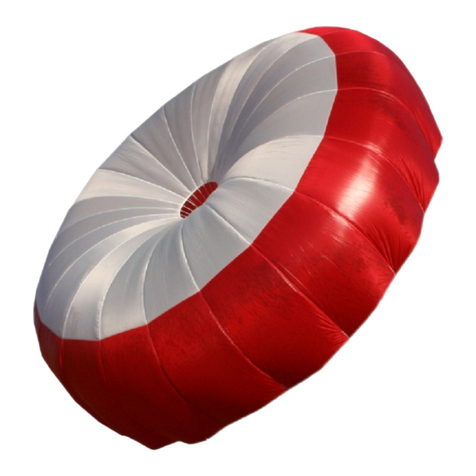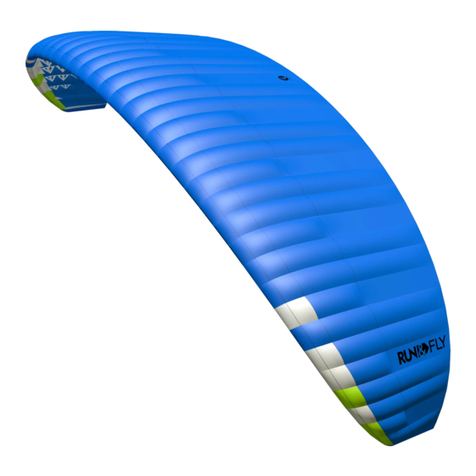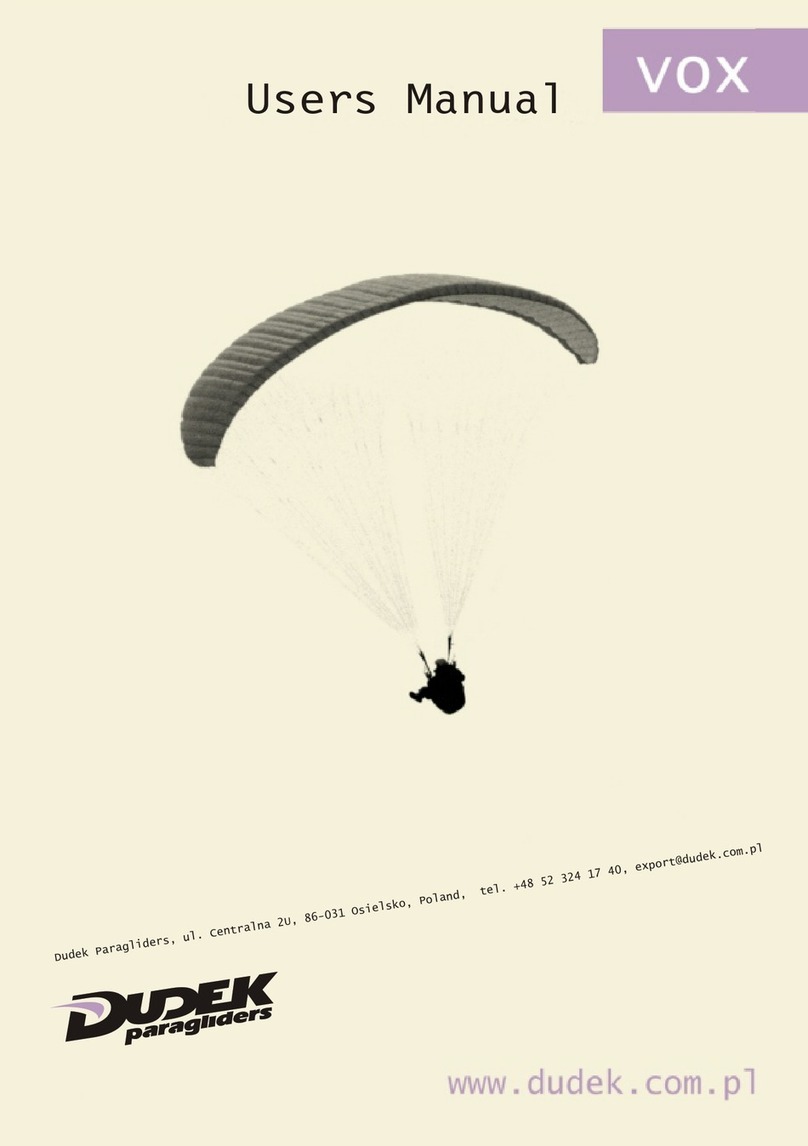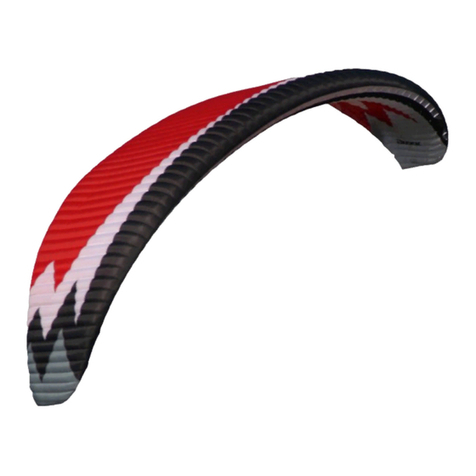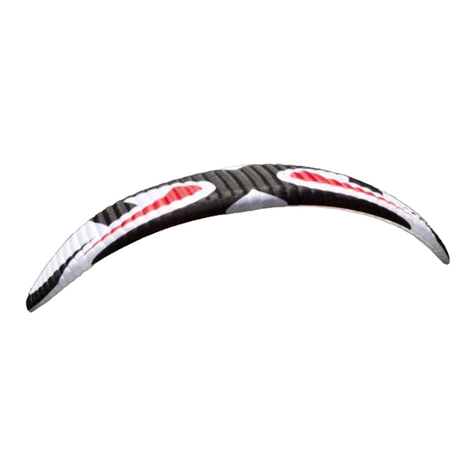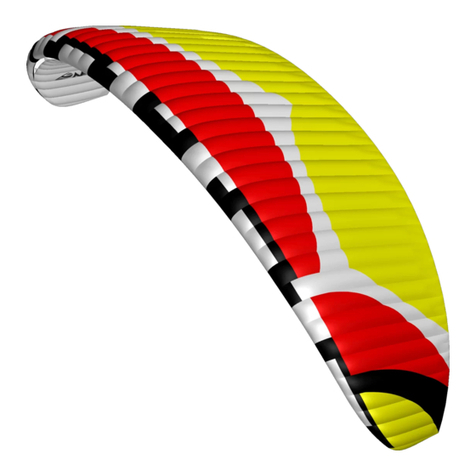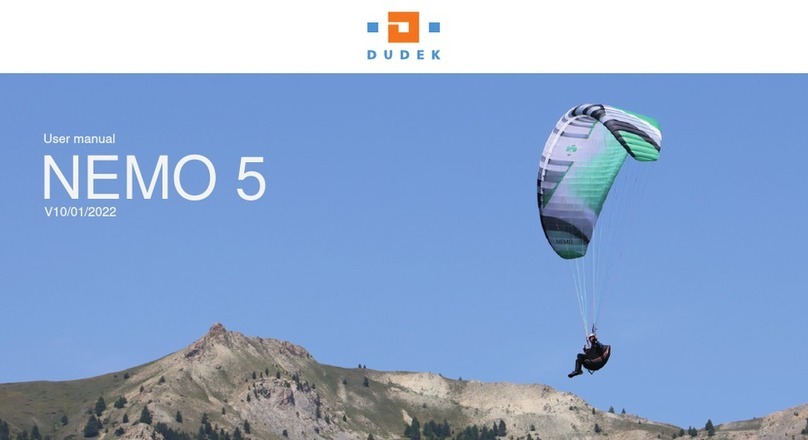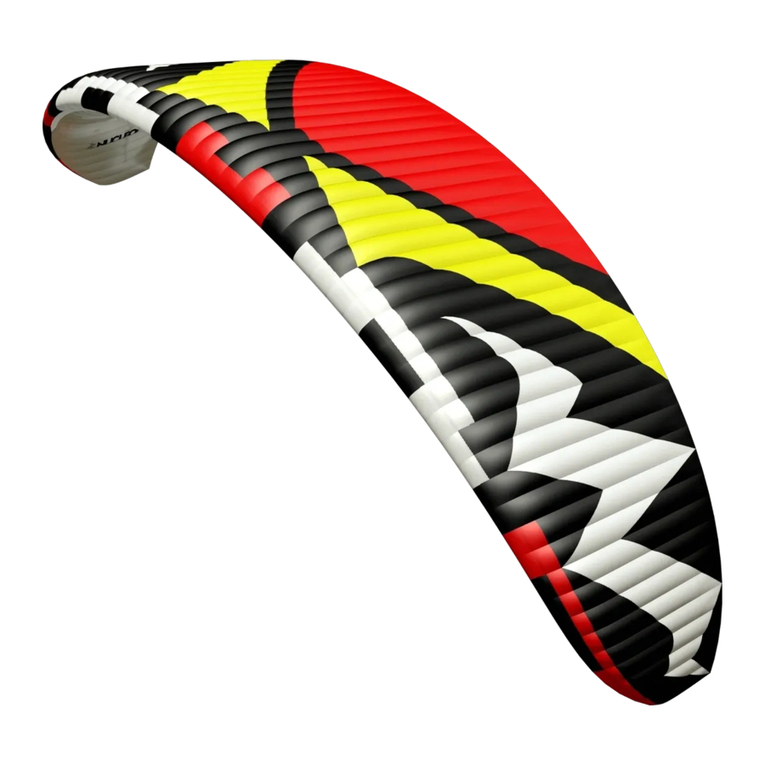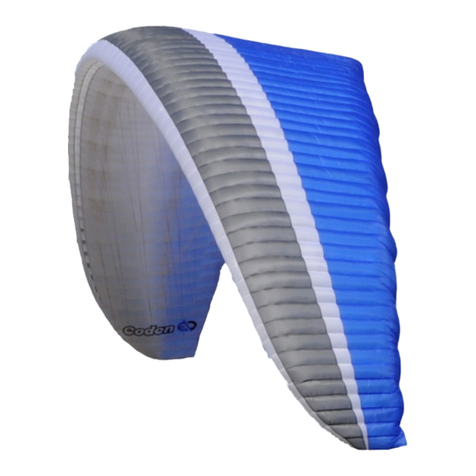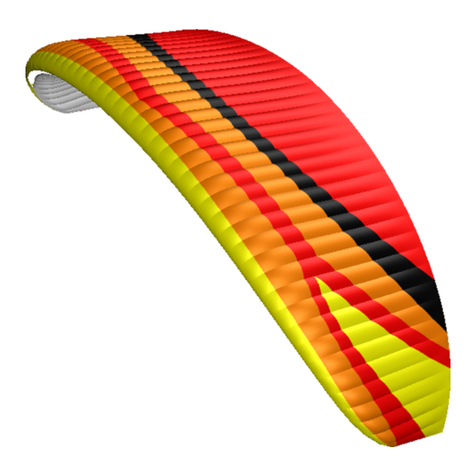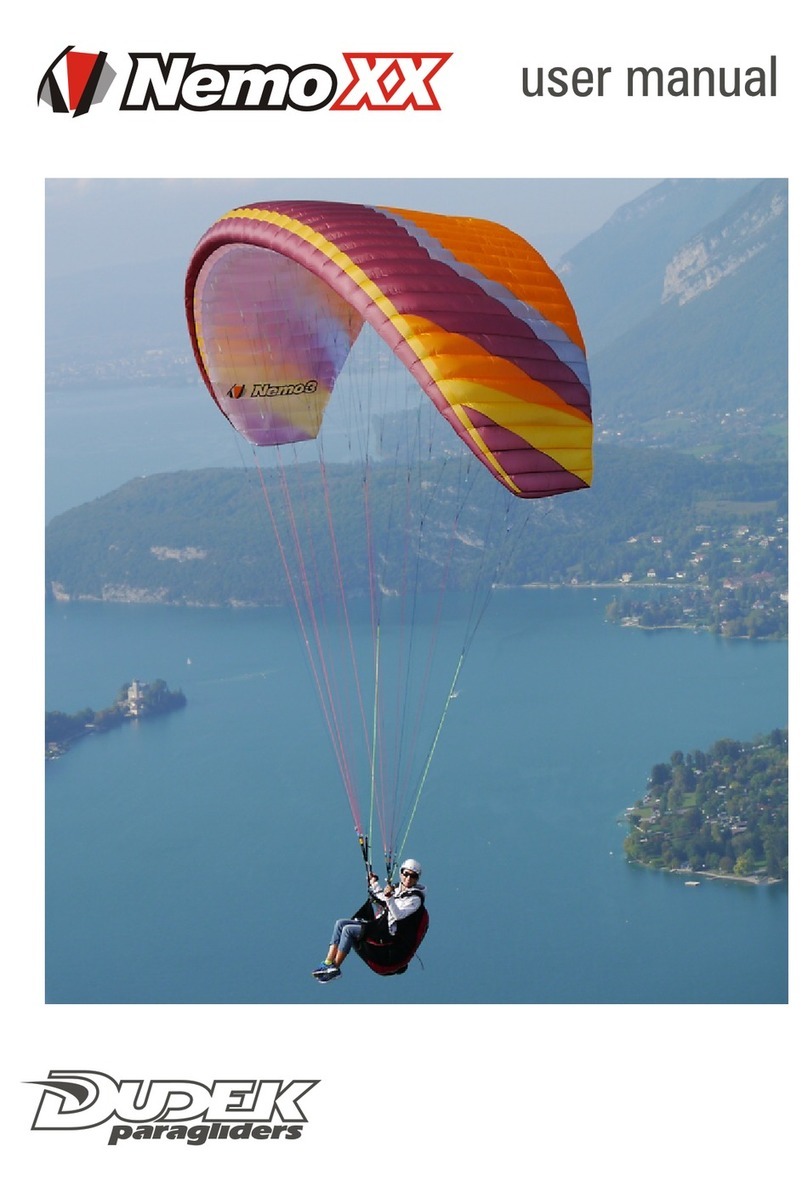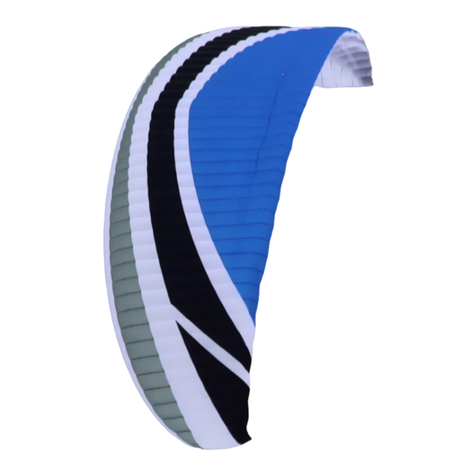
THE CLOTH
25-26)
Each cloth has its own characteristics, so they must be properly matched in
order to create a harmoniously behaving paraglider. For the upper surface of
SHARK we used a Porcher 9092 cloth, named SkyTexAquatic (44g/m ).
Basically it's a nylon cloth covered with superb E85A impregate, introduced
into mass production in January 2002, after a series of extensive laboratory
and real flying tests. Such covered cloth is not that stiff and - what's most
important - has increased tear, stretch and UV resistance. It is not silicon, so
minor repairs can be easily done with self-adhesive strips.
The lower surface is made of SkyTex 9017 with E38Aimpregnate (39g/m).
This cloth has a great weight/resistance ratio and is one of the biggest
Porcher Marine successes in providing proper materials for paragliding
industry.
The ribs must be as rigid and stretch-resistant as possible. We found these
qualities in SkyTex 9017 with E29A impregnate.
RIGGING SYSTEM
We chose latest Cousin Trestec product here, that is Dyneema Ultimate
Prestretched lines. It features high wear resistance and is very strong while
relatively thin.
Dyneema Ultimate is additionally stabilized during production process - each
thread is first stretched with carefully chosen force and then thermally
stabilized in strictly observed temperature. As a result we got a line that is a
lot less elastic, less likely to shrink while wet and with equal load distribution
on entire length. Part of the SHARK lines have coloured polyester sheath
covering a core, while the majority consists of non-sheathed lines covered
with the impregnate only.
The rigging system consists of individual lines looped and stitched at each
end. There is a high diversity of lines used, as we wanted to have best
strength/diameter ratio in each lines group, depending on existing loads (see
table on pages .
The upper level (gallery) lines start at the attachment points. Every three
lines adjoin to one suspension line. The outer lines are first gathered by twos
and threes in a middle level lines, and these in turn by twos in one line. Main
suspension lines attach to risers with triangular quick links (maillons). The
stabilizer lines connect the outer suspension points to the maillons in
cascades as well.
The same story goes as for steering lines. With consecutive cascades they
lead down to main brake lines which then go through pulleys connected to
the C-riser and finish at the brake handles. The outer steering lines in upper
level additionally go through a metal loop to improve steering effectiveness.
55
USER MANUALUSER MANUAL
